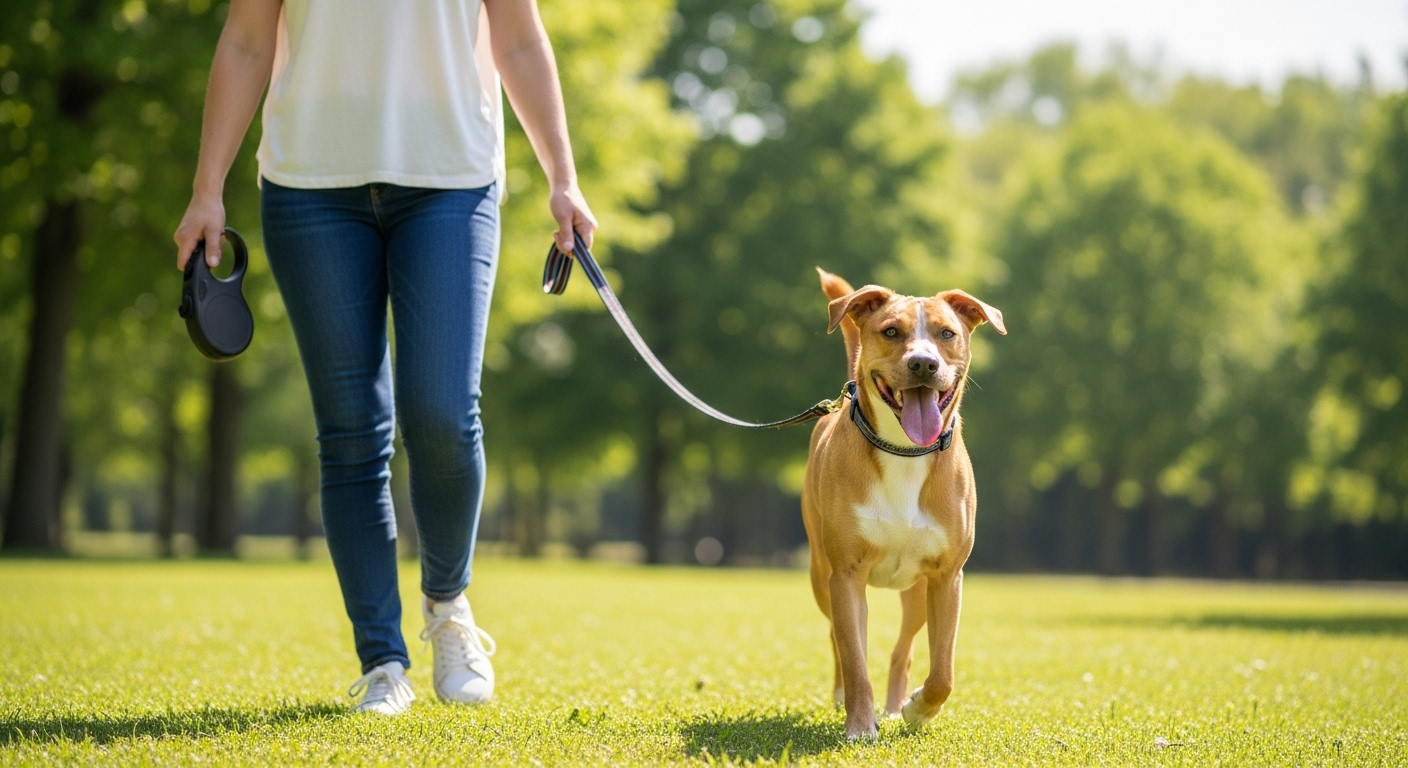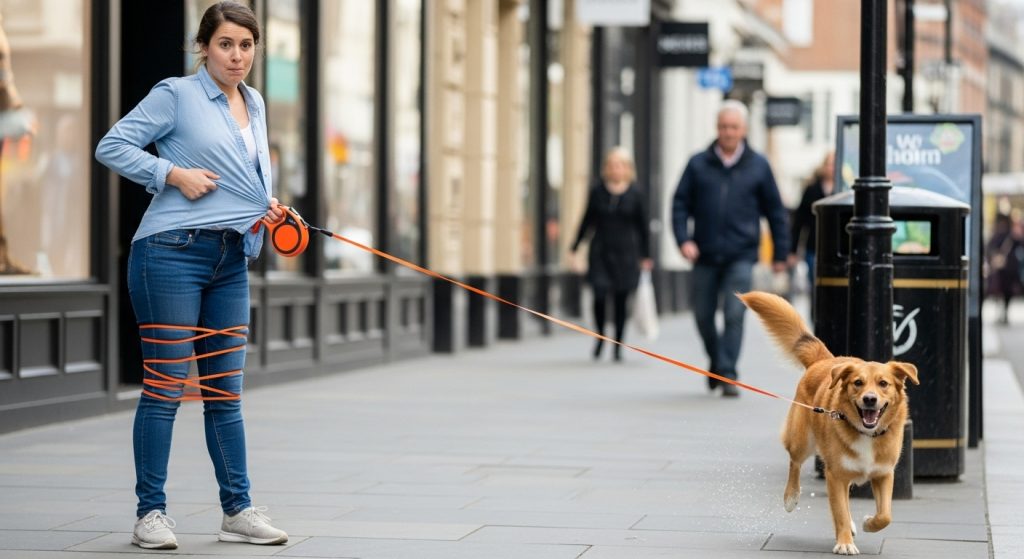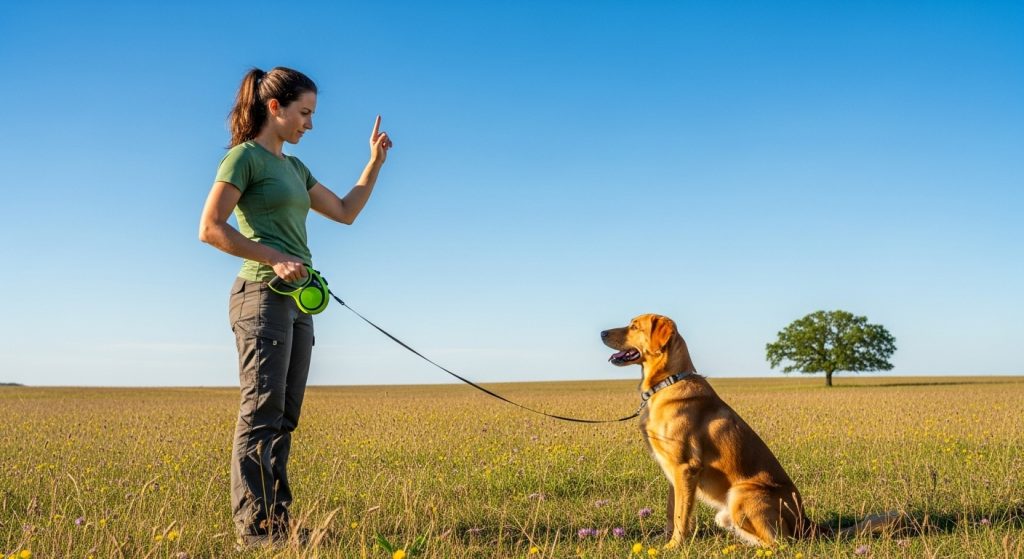Retractable leashes spark endless debates among dog owners. Some praise them for the freedom they offer, while others warn about safety risks and lack of control. So, what’s the truth?
If you’ve ever seen a dog sprinting ahead on a 20-foot leash, you’ve probably wondered whether retractable leashes are good or bad. The reality lies somewhere in between. These tools have clear benefits—but also serious drawbacks when misused.
In this comprehensive guide, we’ll explore both sides of the leash — the advantages, disadvantages, and best practices for using them responsibly. By the end, you’ll know exactly whether a retractable leash fits your walking style and your dog’s personality.
The Bright Side: Benefits of Retractable Leashes
Retractable leashes aren’t inherently bad. When used properly and in the right environment, they can enhance the walking experience for both you and your pet.
Freedom to Explore
Dogs are natural explorers — they love to sniff, wander, and investigate their surroundings. A retractable leash gives your pup more freedom to move without losing connection to you.
-
Ideal for open parks, beaches, and trails.
-
Helps reduce leash frustration for energetic or curious dogs.
It’s particularly useful for well-trained dogs who respond reliably to voice commands. That extra roaming space promotes mental stimulation and a sense of independence.
Comfort for Owners
Retractable leashes allow owners to adjust the length on the go. Whether you’re walking down a busy street or entering a quiet area, you can easily shorten or lengthen the leash.
The ergonomic handle found in most retractable models also provides a comfortable grip during long walks. Some even include brake and lock systems, making it simple to manage your dog’s distance quickly.
Training Opportunities
While not a replacement for a traditional leash, retractable leashes can help with recall training — teaching your dog to come when called, even from a distance. When combined with positive reinforcement, it strengthens trust and communication between you and your furry companion.
The Dark Side: Drawbacks and Safety Risks
Despite their convenience, retractable leashes come with real risks. Many dog trainers and veterinarians caution against using them in urban or high-traffic settings. Let’s break down the main issues.
Lack of Control
The longer the leash, the less control you have. If your dog suddenly lunges toward another animal or the road, you may not be able to retract fast enough. This increases the risk of injuries — not only to your dog but also to pedestrians, cyclists, or other pets.
Shorter, fixed-length leashes provide better control and faster response times, especially during unexpected situations.
Injury Hazards
Retractable leashes can cause rope burns, cuts, or even finger fractures if the cord wraps around your hand. There have also been cases where dogs suffered neck or spinal injuries from a sudden stop when they hit the leash’s maximum length.
In some situations, the cord may snap, especially with strong or large dogs. Cheap models with thin cords are particularly unsafe.
Behavioral Issues
A retractable leash can unintentionally reinforce bad habits. Since the leash constantly extends and retracts, dogs may learn that pulling gives them more freedom. Over time, they might become harder to walk on standard leashes.
This constant tension also confuses some dogs — they can’t distinguish when to stop or slow down, which weakens leash discipline.
Distractions and Entanglement
If you’re walking near other people, trees, or pets, retractable cords can easily tangle or trip others. In the dark, they become nearly invisible — a potential hazard during nighttime walks.
Finding Balance: Safe and Smart Usage Tips
If you love the flexibility retractable leashes offer, don’t worry — you don’t have to throw them away! The key lies in responsible usage and understanding your dog’s needs.
A. Choose the Right Leash for Your Dog
Not all retractable leashes are equal. Select one that matches your dog’s weight, strength, and size.
-
Small dogs: Lightweight nylon cords work fine.
-
Medium to large dogs: Choose thick tape-style cords with sturdy locking mechanisms.
-
Active breeds: Look for models with shock absorption or brake control systems.
Avoid cheap or unbranded leashes — safety depends on quality construction and reliable retraction mechanisms.
B. Use Them in Safe Environments
Retractable leashes are best suited for open spaces — like fields, beaches, or suburban parks. Avoid using them:
-
In crowded city sidewalks
-
Near roads or bike lanes
-
Around other dogs or people
Whenever you’re in a public place, keep the leash short until you reach a clear area.
C. Keep Situational Awareness
Stay alert to your surroundings. Always maintain eye contact with your dog and be ready to lock the leash if they bolt.
If your dog is reactive (barks or lunges), stick to standard non-retractable leashes until they’re properly trained.
D. Regular Maintenance
Retractable leashes can jam or wear out.
-
Check the mechanism weekly for smooth retraction.
-
Clean the cord to prevent dirt buildup.
-
Replace immediately if frayed or damaged — never wait for it to snap.
E. Combine with Proper Training
A leash should support training, not replace it. Teach your dog basic commands like stop, come, and heel before introducing a retractable leash.
A trained dog plus a high-quality retractable leash equals enjoyable, stress-free walks.
Balance is Key
Retractable leashes aren’t inherently dangerous — but they require responsibility, awareness, and proper training. When used wisely, they provide a blend of freedom and safety that many dogs enjoy. However, misuse can lead to accidents or bad habits that are hard to break.
In short:
-
Great for trained dogs and open areas.
-
Risky in crowded or uncontrolled settings.
-
Always prioritize safety and control.
Like any tool, the value of a retractable leash depends on how it’s used. If you stay attentive and invest in a quality product, you can enjoy stress-free adventures with your four-legged companion — one walk at a time.




